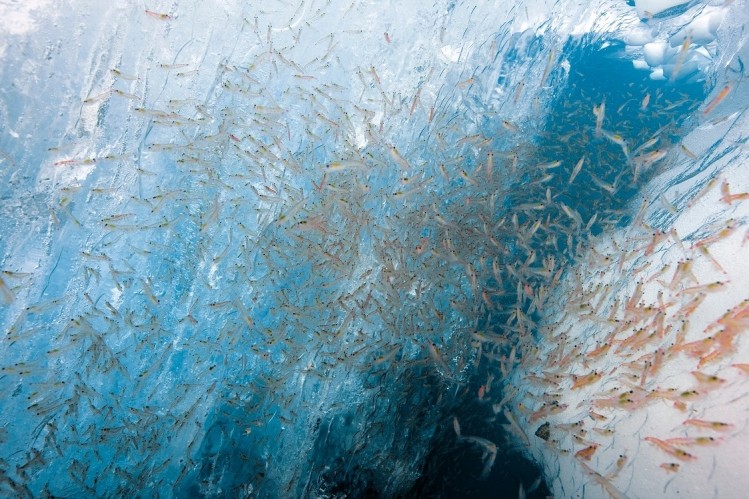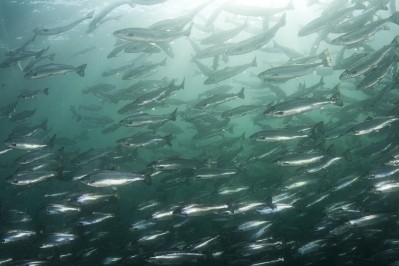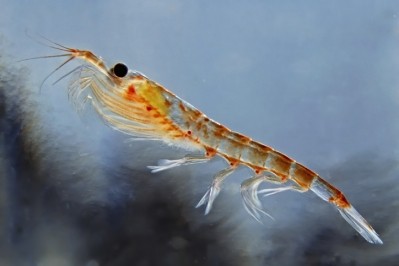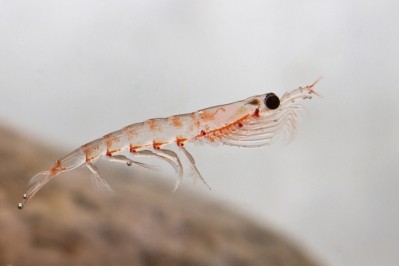Aker BioMarine unveils ambitious sustainability goals towards 2030

The company develops krill-based ingredients for nutraceutical, aquaculture, and animal feed applications.
In order to achieve the carbon goal by 2030 and the net-zero ambition by 2050, Aker BioMarine will need to make its harvesting and production operations more efficient, Christina Ianssen, its sustainability manager, told FeedNavigator.
It will also look to cut CO2 emissions per ton of krill oil produced by half by 2030 in its Houston production plant, with the company outlining how it will use advanced science and data analysis to improve production processes in order to reach that target.
Through its recently launched circular economy initiative, AION, the company said it will repurpose all product and plastic waste into new products that are used in high volume such as shopping baskets and food trays.
Along with production, innovation, and efficiency improvements, it is planning to add energy saving technologies to its new supply vessel, Antarctic Provider: “We will use sail buoys and drones to reduce fuel use while searching for krill,” said Ianssen, adding that such devices minimize the time harvesting vessels need to spend searching for krill.
All the drones collecting data operate with zero emission. The company has already deployed its first ocean data drone with the aim of significantly reducing financial and environmental costs and collecting scientific information.
Green ammonia
Aker BioMarine also has ambitions around the deployment of green ammonia to power the company’s vessels. The Antarctic Provider is equipped with an energy efficient, hybrid engine that is convertible for greener fuels, as they emerge.
Green ammonia is sustainable because it is produced by renewable electricity, remarked Ianssen.
“Ammonia (NH3) is produced primarily through a chemical process in which hydrogen reacts with nitrogen taken from the air to form ammonia. The competitiveness of ammonia lies in the fact that it can be produced without emissions and it is cheaper and easier to store (both on land and on board) than hydrogen. Ammonia also has a much higher energy density than hydrogen. It can be used directly in internal combustion engine together with other conventional fuels,” she explained.
The krill ingredient producer plans to have vessels that are using ammonia as fuel towards 2030, when the infrastructure for production and distribution of green ammonia is in place.
At the end of February, the company signed an agreement with Aker Clean Hydrogen, and is teaming up with other key players, to industrialize the production of green ammonia, in an industry first move.
The company said it is essential that the industry tests and develops solutions for ammonia on a large scale. “This will make it possible not only for Aker BioMarine but also for Norwegian suppliers and renewable companies to be world-leading on greener solutions for a broad range of sectors.”
Addressing UN's Sustainable Development Goals (SDGs)
Aker BioMarine said its ambitions for CO2-cuts are closely connected to the UN's Sustainable Development Goals (SDGs), specifically goal 13, that calls for urgent action to combat climate change and to slow and stop global warming.
It has signed off on eight sustainability commitments to be achieved by 2030. These commitments will guide the company in ensuring responsible operations throughout the value chain, as well as in making a positive impact. In summary, it will:
- Reduce its carbon intensity per ton krill produced by 50% from 2020 levels.
- Ensure full circularity on all of its principal waste streams.
- Make aquaculture production more efficient, by contributing to 1 billion extra servings of seafood produced annually.
- Combat lifestyle diseases by delivering 5 billion doses of health promoting nutrients annually.
- Develop innovative products that play an integral role in sustainable diets and the future food system.
- Decarbonize aqua and animal feed by delivering low-carbon marine ingredients.
- Improve sustainability of fisheries through contributing to data and science driven regulation and ocean management.
- Maintain unconditional Marine Stewardship Council (MSC) certification and ensure transparency in vessel operations.












